Rosehip: the benefits and harms of the plant and cultivation features
Rosehip is a shrub familiar to many, the fruits of which have long been used in both folk and official medicine. This is a wild-growing representative of the rose family, which for many centuries has attracted both the beauty of flowers with a magnificent fresh aroma, and healthy bright red fruits that contain a real storehouse of vitamins and other useful substances. Rosehip grows in the wild, but it will not be difficult to grow it on your own plot.
Content:
- Why are rose hips useful?
- Can rosehip lindens be harmful
- How to grow a rosehip in a summer cottage
- Reproduction of rose hips for transplant
- Rosehip feeding and harvesting
- Other types of rose hips
Why are rose hips useful?
Rosehip or wild rose is a beautiful plant that many gardeners like. However, it is grown not so much because of its beautiful flowers, but because of the healing properties that were known to ancient doctors.
Rosehip fruits contain more vitamin C than lemon or apple, in addition, they are a source of calcium, potassium, manganese and dozens of useful microelements.
It is important to use rose hips correctly: the benefits and harms directly depend on the dosage of pleasant drugs and compliance with the recipe for their preparation. Today, various pharmacy syrups and tinctures are popular, but folk recipes also do not lose their fans.
The increased interest in rose hips is due to the following beneficial properties:
- It is an excellent remedy for fighting colds. Rosehip tea and various decoctions awaken the body's defenses and help strengthen the immune system. At the same time, rosehip broth has a very limited list of contraindications and does not have any side effects at all, unlike pharmaceutical drugs.
- Rosehip has a beneficial effect on the cardiovascular system: it contains trace elements that strengthen the heart muscle and make the walls of blood vessels more elastic. This helps to normalize blood pressure and improves the well-being of hypertensive patients.
- This plant is a natural antioxidant, that is, it helps in the prevention and treatment of cancerous tumors. Since it has a beneficial effect on the immune system, it can be used as an additional agent in the treatment of tuberculosis and a number of other serious diseases.
- Fruit rose hips are very useful for digestion: they contain a lot of sugar, taste good and help to improve the functioning of the stomach.
These are just some of the beneficial properties that the amazing wild rose has. It is difficult to find a plant in nature that has a wide range of medicinal qualities. Traditional medicine ascribes to the rosehip the property of helping against infertility, it has long been used to heal wounds, it helps to increase male strength, the decoction is able to successfully dissolve stones that form in the gallbladder. These and other properties are manifested when using rosehip preparations in the correct dosage.
Can rosehip lindens be harmful
Rosehip, like any medicine, requires a reasonable approach to use, only in this case it will be truly useful. It is important to observe the correct dosage and not try to completely replace traditional medicines with herbal medicine. Any plant material should be collected only in ecologically safe areas as far as possible from industrial enterprises and highways.
It is important to observe storage conditions and to choose the correct forms of medication.
Doctors today give the following recommendations:
- Alcohol tinctures are not useful for hypertensive patients. In this case, it is recommended to take decoctions or to make tea with rose hips. But for those who suffer from low blood pressure, alcohol preparations are preferable.
- A person with gastritis and gastric ulcer should be used with caution. Rose hips are quite sour, so everything should be in moderation. Also, rose hips are not recommended for chronic constipation.
- The tendency to form blood clots is a contraindication for taking any rosehip medications.
- Allergies and individual intolerance are possible for any herbal preparations. Alcohol tinctures are not given to young children; in any case, you need to talk to a doctor.
The list of contraindications is not so wide, and rosehip remains one of the best natural medicines for the widest range of people.
In order not to harm yourself, it is important not to get too carried away with herbal medicine and avoid overdoses. With a reasonable approach, rose hips will only benefit the organisms and even help slow down aging.
How to grow a rosehip in a summer cottage
Rosehips can be harvested outside the city or purchased at any pharmacy, but it is much more useful and interesting grow a rosehip bush on your own site. It looks just great, and at the time of flowering, it can turn into one of the main decorations of the summer garden. Light pleasant scent of roses and beautiful pink buds will not leave anyone indifferent.
It can also be used as a hedge: it will be problematic to get through the thorny bush, so the site will not only be beautiful, but also protected from outside intrusion.
Features of twisting:
- For placement of rosehip bushes, it is better to choose well lit areas, moreover, swampy or low-lying soil is undesirable: the dog rose has a powerful root system, and it does not tolerate excess moisture very well.
- If the roots start to rot, the plant can die very quickly.
- Important: the rhizome will quickly begin to grow, like raspberry bushes: if you do not protect the bush in time, then you will have to decide what to do with the numerous young shoots.
- Rosehip is a cross-pollinated plant, so several bushes should be planted side by side if you plan to continue harvesting.
- In order for the yield to be high, you need to periodically prune the growing bush: usually this is done every 2-3 years.
- You need to leave about about 20 of the strongest branches, then you can get a large number of berries.
- Pruning is carried out in the spring, it is advisable to remove old branchesthat have already stopped bearing fruit.
- You can form a beautifully shaped bush, then it will perform an additional decorative function.
Rosehip does not require constant watering: thanks to the powerful rhizome, it has enough moisture, which is contained in the soil. Only in very dry weather can you water the plant at the rate of 2 buckets of water per bush. In general, the dog rose is watered no more than three times per season, more frequent watering can lead to decay of the root system.
Reproduction of rose hips for transplant
Rosehip can propagate for cultivation in several ways6 these are seeds, root cuttings, seedlings, etc. Different methods have different results: seed propagation is used quite rarely and most often only for breeding purposes.With its help, you can get bushes with unusual color of buds due to cross-pollination or increase the ability to bear fruit.
Seed propagation is the longest and requires a lot of work.
Let's take a closer look at this and other methods:
- It is preferable to collect material for seed propagation in August, for this, not yet ripe brown fruits are used.
- Planting is most often carried out in the autumn: the seeds are planted in rows, sprinkled with sawdust for the winter.
- In the spring, after the soil thaws, the first shoots will begin to appear, which are recommended to be covered with a mini-greenhouse made of film.
- It is removed when the first decorated leaves appear.
Reproduction by seedlings has become more widespread, as it allows you to quickly get a full-fledged young bush.
Planting is recommended in autumn in October, the seedlings are cut so that no more than 8 cm remains above the surface.If the soil is acidic, a small amount of lime fertilizers is added to it, and rotted manure and compost can be used as top dressing. It is important to calculate the distance between the bushes: to form a hedge, you will need to plant seedlings half a meter apart. If you need bushes to harvest, they will need a lot of space.
Another option is to propagate the bush using rhizome offspring:
- In this case, a rhizome offspring is separated from the largest and healthiest bush with a shovel. which can be transplanted to a new location.
- In the second variant of such reproduction, the adventitious bush begins to huddle in advance so that it has its own powerful roots.
- Only then is it separated from the mother plant.
Rosehip feeding and harvesting
To get a large number of berries, the plant will need to be fed, for which various types of fertilizers are used.
Starting from the second year of the life of the bush, the owner must feed it with nitrogen fertilizer three times per season:
- The first time is in early spring, when the plant wakes up after winter rest.
- The second time was during the period of the most active growth, that is, in July.
- The third time is in mid-August, at the time of fruiting.
Once every three years, the bush needs mandatory feeding with organic fertilizer. Each plant requires about 3 buckets of humus, the soil must be previously loosened. Fertilizing will make the plant stronger, so you can hope for a good harvest.
Collecting rose hips is the most enjoyable time for any gardener.
It is carried out in several stages, and the first time it should be done at the beginning of August. It is important that the harvest is completed before the frost occurs, as otherwise the fruits will lose many vitamins and be less useful.
The shell of the fruit should have a bright orange or red color, which indicates that they are already sufficiently ripe.
Since the thorny bushes are not easy to get to, you need to take care of tight clothing and protective gloves. The collected fruits can be easily dried and taken out as needed, in folk medicine there are a huge number of infusions on fresh fruits, and some even make jam from them. The harvested fruits taste good, but due to the high content of vitamin C, it is undesirable to eat them fresh for people with high acidity of the stomach.
Other types of rose hips
The wild rose grows in many countries, and today there are more than 200 types of rose hips... Some of them are distinguished by excellent decorative qualities, others are grown to a greater extent for the fruit.
- In the middle lane, the wrinkled rosehip remains the most common - this species has pink flowers and characteristic leaves of bright green color.
- The spiny rose is considered a northern species; it tolerates even severe frosts perfectly. It is also found in Central Asia, and is characterized by small, bright red or pink buds.
- Terry rosehip is one of the most beautiful species, which is distinguished by magnificent white flowers. Terry buds have a pleasant aroma, and the bushes bloom very profusely, which only enhances the effect.
Rosehip remains one of the most beloved medicinal plants, and thanks to its healing power, it is widely distributed in all regions.
More information can be found in the video.



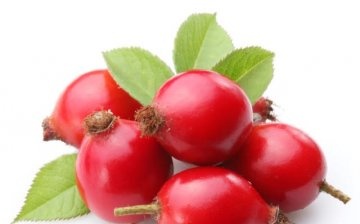
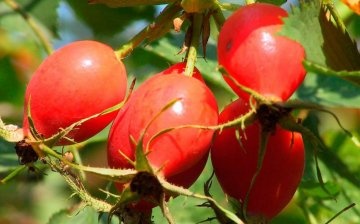

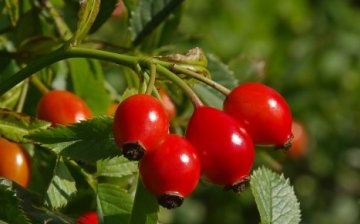
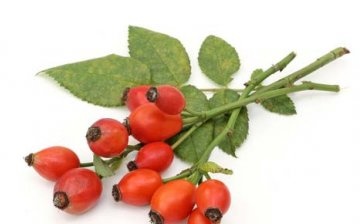

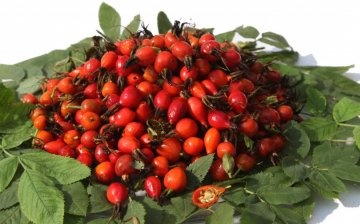







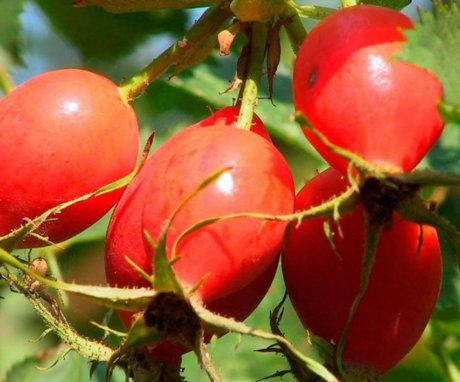
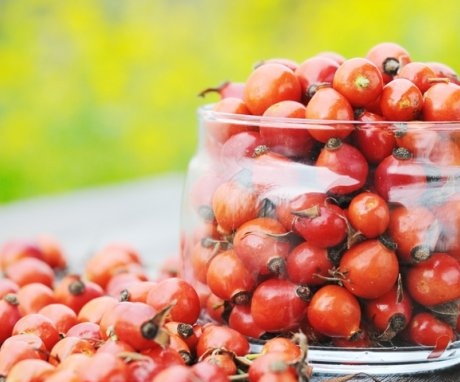

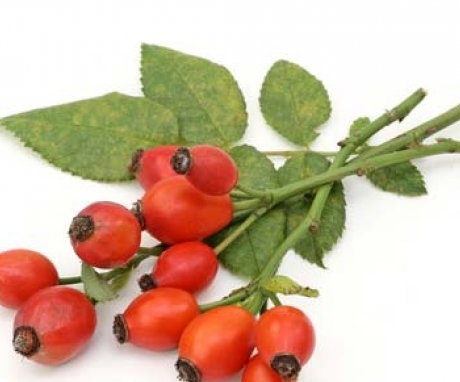
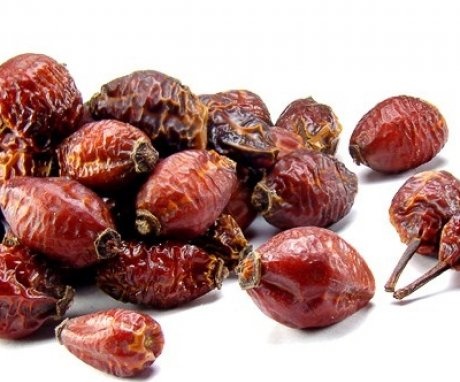
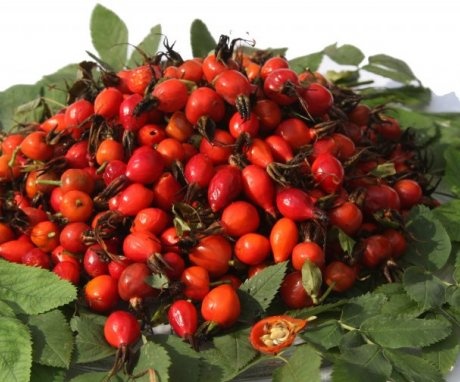
We planted a rose hip on our site a few years ago. I can't say that it was easy to grow full-fledged bushes.
In our country house, the soil is favorable for rose hips, so there were no special problems in growing a bush. The only thing - I had to tinker so that the bush did not grow very much. So now every winter we enjoy tea with rose hips.
Our dog rose grows under the fence: it is beautiful and an additional hedge, because it is not easy to get through it.